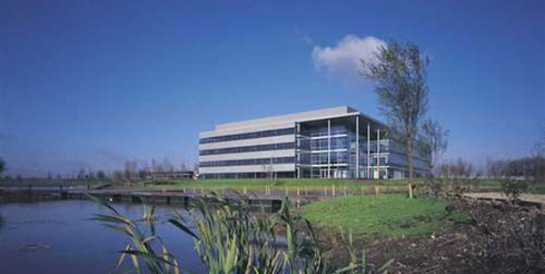Some Familiar Experiences
[Note: I regard this post as unfinished – I’m publishing it now in the hope that some kind readers will help me in bringing it to something nearer completion. Also, you might like to check in now and again for possible updates.]
A Conversation
Here’s a transcript of a conversation that didn’t take place, but could have, in the vicinity of Reading, England, circa 1999.
Sam: Thanks for allowing me to get some insights into Familiar and what makes it different from other software houses.
Bob: Thanks for showing an interest. We feel the UK software industry would serve society better if more folks had some exposure to what we’re doing here, and maybe take on board some of the principles that have guided us so far.
Sam: I’d like to start with the one thing that intrigues me most. The way you set salaries here. I’ve heard you allow people to set their own salaries? Is that true? Can you explain why you do that?
Bob: Surely. When we set up Familiar, some three years ago now, we all decided we wanted a company that felt more like a family, both for the folks working in the company, and for all the other folks involved – our suppliers and customers, for example. That’s reflected in one aspect of the name “Familiar”, of course (I won’t go into the other aspects of the name, just now). At the time, I was reading the book “Families and How To Survive Them” by John Cleese and Robin Skynner. That book led me to Eric Berne’s work on Transactional Analysis. Berne’s work got me thinking about building a community where Adult-Adult interactions and relationships were the norm.
Sam: So how does having folks set their own salaries play into that idea?
Bob: Well, our approach to salaries – and the same with equipment, working times, locations and the nature of the relationship between the community and the individual – is to have people choose for themselves. If we want folks to behave more often like adults, it makes sense to us to treat them like adults. Folks capable of making their own decisions about the things that matter to them, and to the community as a whole. Moreover, who is at all equipped to decide what salary, etc., suits their needs – other than each individual?
Sam: That sounds really out there. How do people find it?
Bob: It’s true it’s not without its challenges. Firstly, people just starting with us often haven’t thought very much about their commercial value. In other words, at what level they might set their salaries. What might be “fair”. And if someone asks for any given salary, cap-in-hand like, I push back. As far as I’m concerned – and speaking on behalf of the community, too – it’s not a negotiation. Someone announces their intent to bill at a certain rate, or get paid a certain monthly stipend, and that’s what happens. I see it as a positive, all round – for them, others, and the community as a whole – for someone to think about what they charge. You might say “what they’re worth” – but that’s too crass a phrase for me. And then there are other challenges, too.
Sam: Such as?
Bob: Folks billing or getting paid too little. Strange as it seems, our overall staff costs are rather lower than we expected for a software house such as ours. Nobody’s complaining, really. But I’d like to see folks reap greater financial rewards, not just the – less tangible but no less important – rewards of community, fellowship and interesting projects. Americans call wages “compensation” – I guess folks here don’t have to receive as much compensating for the crap as in other companies.
Sam: So you don’t get anyone “trying it on”?
Bob: Not to date. We subscribe to McGregor’s Theory-Y, which invites us to believe that employees are internally – or ‘intrinsically’ – motivated, enjoy their job, and work to better themselves without a direct (financial) reward in return. We’ve found this to be a valid assumption in our case. We strive to make Familiar a place when folks love to get together and do interesting, meaningful things. As our Credo states: “Familiar exists for folks to come together and explore what ‘fulfilment’ means for each one, individually”.
Sam: And as for the other things folks can choose? You mentioned equipment, locations, working times, and the nature of the relationship with the community?
Bob: Again, we want folks to feel like we regard them as adults, with the capacity to choose what’s best and most suitable for them, and thus for the (extended) community too. So everyone gets to choose their development computer(s), monitors, keyboards, etc., and development platform (operating system, tools, languages and such). Some folks have their own kit, and for others Familiar buys some or all of the kit. Some interoperability considerations apply, of course, and the customer often has some requirements relating to the operational/production environment. Project teams organise themselves to factor all this into the mix as part of their development process.
Sam: And locations?
Bob: Everyone works where they feel most comfortable, convenient or productive. Different issues affect different people. And folks are invited to vary their location as they see fit – and as suggested by the nature of the task they’re involved with at a given hour or on a given day. We have our office here, of course, with the public cafeteria, bookable meeting rooms, and our private community office space divided into bullpen, library/lounge with couches, a number of personal offices and the kitchenette. But folks work from home – and each others’ homes – as often as not. We also make a point of getting out as a group, both for meals and drinks in local restaurants and pubs, and for longer weekends away at comfy hotels. One chap who would otherwise have a long commute has a satellite office nearer to his home location. Again, “everybody’s different” – and capable of making their own choices.
Sam: Working times and the relationship with the company/community?
Bob: Folks work the hours that suit them, with the only proviso that the clients’ schedules get consideration. We have some early birds, some late birds, and some bird-of-a-feather (folks who like to regularly pair or work in sub-groups). The latter means they coordinate (self-organise) their schedules and locations, to some extent. As for relationships with the community, I’m talking about what some other companies might describe as the “contractual relationship”. We have some hour- and day-rate “contractors”. Some weekly paid and monthly paid “employees”, and a couple of folks – like myself – whose relationship falls outside those categories. And while we’re talking about pay, I guess I could mention the bonuses. We don’t have any formal bonus scheme as such, but when a particular project goes well, folks get together to consider the costs and revenues and decide if a team bonus is appropriate and what level and split would suit.
Sam: Would you do anything different if you found yourself involved in a different community in the future?
Bob: Nothing significantly different. Excepting that circumstances prevailing when we started Familiar allowed us the opportunity to trial these “wacky” ideas in practice. Such circumstances may not present themselves next time around. Folks have to be open to the ideas of doing things differently, or I suspect a similar scenario might never even get off the ground.
Sam: Do you have any advice for others thinking about building this kind of environment for their businesses?
Bob: I hate giving advice – I find it rarely followed. But one thing I would say – don’t underestimate the time needed for, and the value of, supporting folks who might feel uneasy from time to time about the choices they’re enabled to make. I’ve put in much time supporting people here when the way forward has seems unclear for them personally. But I feel it’s never been enough support, and I always want us to do more. And one word of caution: Time. It’s taken us three years of daily practice to even begin to understand how these ideas all fit together. The benefits are definitely there, we’re demonstrated that, but few companies seem to have a longer-term view. Along the way, we have discovered some useful shortcuts.
Sam: Thanks, Bob, for sharing your experiences with me, and my readers.
Bob: My thanks to you also, Samantha. It’s been fun.
[End]
– Bob
Further Reading
The Starting of Familiar ~ Think Different blog post












